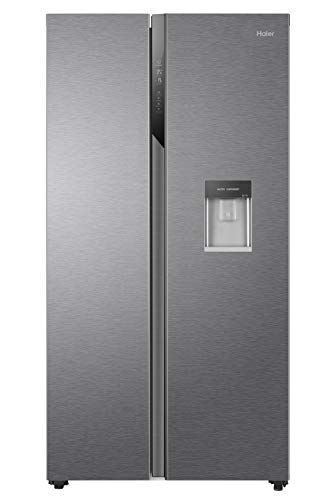- 작성자 Isidra Darosa
- 댓글 0건
- 조회 19회
- 작성일 2025.08.13
본문
Understanding Fridges and Freezers: The Essential Kitchen Appliances
Refrigerators and freezers are 2 of the most important home appliances in modern-day kitchen areas. These devices serve a vital function in food preservation and waste decrease by guaranteeing that perishable products stay fresh and safe for intake. This article dives into the numerous types of fridges and freezers, their functionalities, and crucial considerations for selection and maintenance.
Kinds of Refrigerators
The market uses a range of refrigerator types, each created to meet various consumer needs. Below is a list of the most common kinds of fridges:
Top-Freezer Refrigerators
- Most common type.
- Freezer compartment lies above the refrigerator section.
- Normally more budget-friendly and energy-efficient.
Bottom-Freezer Refrigerators
- Freezer lies at the bottom.
- Allows simpler access to fresh items at eye level.
- Often includes pull-out drawers for much better organization.
Side-by-Side Refrigerators
- Refrigerator and freezer sections are nearby.
- Ideal for narrow kitchens and allows simple access to both compartments.
- Frequently comes with water and ice dispensers.
French Door Refrigerators
- Combines a bottom freezer with double doors at the top.
- Offers ample storage and elegant styles.
- Frequently includes functions like temperature-controlled drawers.
Compact Refrigerators
- Smaller size ideal for limited spaces.
- Commonly used in dormitory, studio apartments, or as secondary fridges.
Table 1: Comparison of Refrigerator Types
| Type | Benefits | Downsides | Common Size |
|---|---|---|---|
| Top-Freezer | Budget friendly, energy-efficient | Less practical access to the freezer | 14-30 cu. ft. |
| Bottom-Freezer | Simpler access to fresh food | Freezer can be harder to arrange | 19-30 cu. ft. |
| Side-by-Side | Easy access, water/ice dispenser | Narrow vs. storage area | 22-30 cu. ft. |
| French Door | Stylish, roomy, arranged | More pricey | 20-30+ cu. ft. |
| Compact | Space-saving, portable | Minimal storage | 1.7-5.5 cu. ft. |
Types of Freezers
Freezers are a similarly crucial home appliance for food preservation. They come in different styles designed to fit various family needs. Think about the following types:
Upright Freezers
- Operate like a standard refrigerator with vertical storage.
- Easier to arrange with racks and compartments.
Chest Freezers
- large fridge freezer Uk, horizontal style typically using more storage area.
- Maintains temperatures better throughout power interruptions.
- More energy-efficient than upright designs.
Portable Freezers
- Compact systems ideal for outdoor activities or little areas.
- Often used for camping trips or as short-lived storage.
Table 2: Comparison of Freezer Types
| Type | Benefits | Drawbacks | Typical Size |
|---|---|---|---|
| Upright Freezer | Easier to arrange | Less energy-efficient, more floor area | 5-20 cu. ft. |
| Chest Freezer | Holds more products, energy-efficient | Harder to arrange | 5-25 cu. ft. |
| Portable Freezer | Compact and versatile | Restricted storage capacity | 1-10 cu. ft. |
Key Features to Consider
When choosing a fridge or freezer, consumers should bear in mind a number of functions that can boost performance:
- Energy Efficiency: Look for designs with the ENERGY STAR accreditation to minimize electrical energy expenses.
- Storage Capacity: Evaluate storage needs based on household size and eating routines.
- Temperature level Control: Some home appliances provide digital controls for accurate temperature settings.
- Adjustable Shelving: Customizable shelving enables optimum company.
- Water and Ice Dispenser: Offers convenience however can take up valuable area inside.
- Sound Level: Sound ratings can influence comfort, especially in open-concept homes.
Pros and Cons of Having a Fridge and Freezer
While fridges and freezers are indispensable technologies, they likewise have specific benefits and downsides:
| Pros | Cons |
|---|---|
| Preserve food life-span and lower waste | Need routine upkeep |
| Allow bulk buying and meal prepping | Can be pricey to purchase and run |
| Offer benefit and quick access to food | Occupy substantial kitchen area space |
Maintenance Tips
To guarantee durability and optimum performance of fridges and freezers, think about the following maintenance suggestions:
- Regular Cleaning: Clean the interior and outside periodically to prevent buildup of dirt and germs.
- Check Seals: Inspect door seals frequently for leaks to keep effectiveness.
- Temperature level Settings: Keep the fridge at 34-38 ° F and the freezer at 0 ° F for optimum food conservation.
- Thaw as Needed: Chest freezers must be thawed frequently to maintain performance.
- Clear Air Vents: Ensure that airflow isn't blocked to improve energy effectiveness.
Frequently asked questions About Fridges and Freezers
Q1: How long can food be kept in a freezer?A: Most foods can be kept in a freezer for a number of months. Meats and poultry frequently last 4-12 months, while vegetables can last up to 8-12 months.
Q2: How typically need to I clean my fridge and freezer?A: It is a good idea to clean your fridge and freezer every 3 to 6 months, or as required when spills take place. Q3: Can I put hot food directly in the fridge?A: It is recommended to cool hot food to space temperature before placing it in the fridge to prevent
raising the temperature level inside the home appliance. Q4: Why is my fridge running constantly?A: This could be due to a malfunctioning thermostat, blocked coils, or door seals that aren't working effectively. Fridges and freezers are vital
possessions to modern-day households, offering vital services for food storage and conservation.
Comprehending the numerous types, features, and upkeep requirements can assist consumers choose the best devices for their needs and maximize their functionality. Embracing energy-efficient designs not only supports sustainable practices however likewise contributes to significant savings on utility bills, making notified options more essential than ever.
댓글목록 0개
등록된 댓글이 없습니다.

